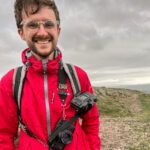Daniel is a copywriter who has well and truly been bitten alive by the 'travel bug'. After ticking off several North American National Parks and exploring Europe by train, his sights are now set on South East Asia. Usually with at least one camera locked and loaded, you'll find Daniel wherever there are mountains, lakes or beaches.
The taking of selfies has officially been labeled as a “public health hazard”, with selfie-related injuries and deaths on the rise, according to a report from the University of New South Wales (UNSW).

Selfie-related injuries on the rise
Reviewing various studies, including a 2008 to 2021 report that found that 379 people died due to selfies, the Australian university has come out strong and highlighted the need for better awareness of the dangers of selfie-taking.
In Australia and America, selfie-takers are more likely to be injured or killed while traveling by themselves and in areas where emergency services struggle to reach. In nations such as India and Pakistan, selfie-takers are more likely to die when in groups and by bodies of water.
Those behind the research have called for an introduction of “no selfie zones” around certain areas that are more likely to result in selfie deaths or injuries. Some countries have already taken these measures onboard, including Russia and India, with the former launching a “safe selfie” guide for its citizens.
Unfortunately, the data seems to suggest such measures are not helping, with selfie-related injuries seemingly on the rise across the globe.
Water-based locations stood out as one of the most dangerous areas likely to lead to selfie-related injuries. These typically are the most photogenic areas, however, with many selfie-takers unlikely to take the warning.
The media’s response
Despite the media typically labeling selfie incidents as foolish and selfish, safety information is very rarely outlined in the coverage.
Many people feel angry and annoyed at influencer culture ruining destinations across the world but there is more to just being annoyed by this new travel trend.
The lambasting of selfie-takers by the media is clearly not stopping those willing to take the risk, so a new approach is needed. The UNSW suggests we need to stop judging those who are taking risky selfies, but rather push the idea that such selfies are a public health issue.
Changing the narrative
Throughout history, there have been plenty of human activities that were once considered normal but are now firmly in the “too risky” category. From driving without a seatbelt to smoking on planes to riding a bike without a helmet. It took time but with a changing narrative, they are now considered a no-go.
The team at UNSW believes that taking dangerous selfies needs to be added to such a list. They believe that by thinking of such selfies as a public health issue, we can move away from victim blaming and focus on communicating better safety measures.
It seems that simply putting up a sign stating the dangers of selfie-related injuries is not enough. Alongside Instagram, UNSW has been working to communicate directly with selfie-takers in the social media giants app. Using real-time locations of the app users, a safety alert is sent straight to the person’s phone.

Top tips to stay selfie-safe
After reviewing various studies and speaking to experts, the UNSW has put together a few tips on how to stay safe when taking selfies out in nature.
1. Stay alert when it comes to weather and water
Weather and coastal conditions can change on a dime, always what the situation is before you leave and turn back if the weather becomes dangerous.
2. Never ignore safety signs or physical barriers
Warning signs are there for a reason and you can easily prevent selfie deaths by simply following them. Never jump barriers to access blocked-off areas either, they are in place to protect you.
3. Stick to designated paths
In most touristy areas, paths have been designed for a specific reason. Stick to them and you’re far less likely to find yourself in a dangerous situation.
4. Stand back from the edge
Never trust cliff edges and always be on the lookout for unstable ground. Unfortunately many have fallen from great heights when trying to grab the perfect selfie, it’s never worth it.

